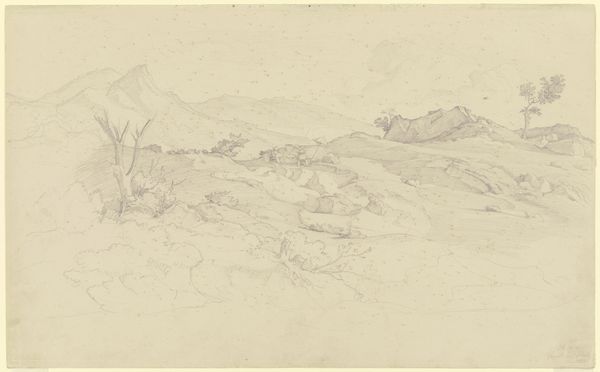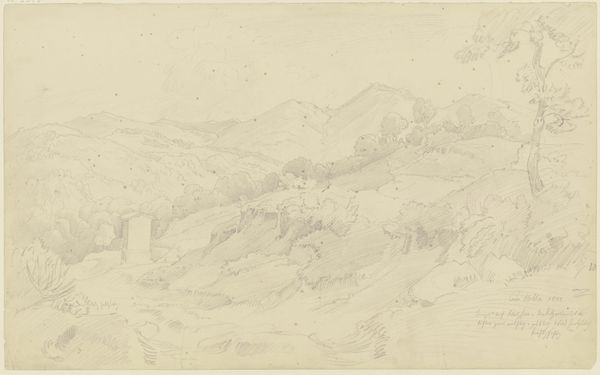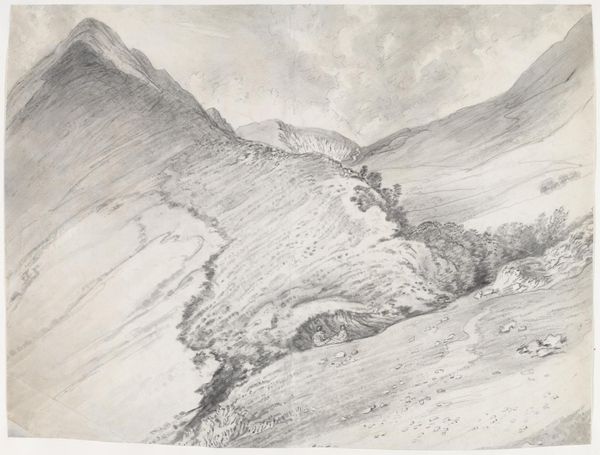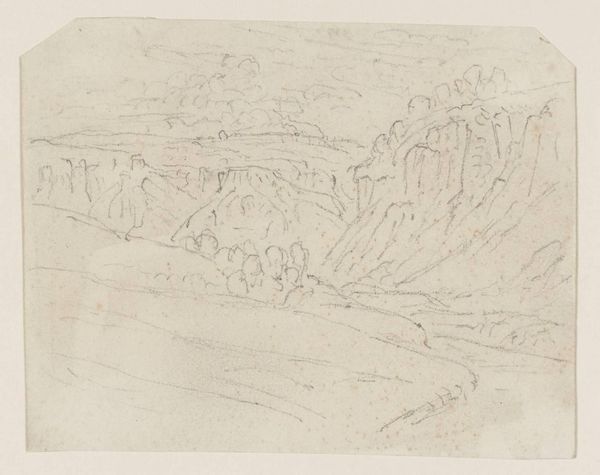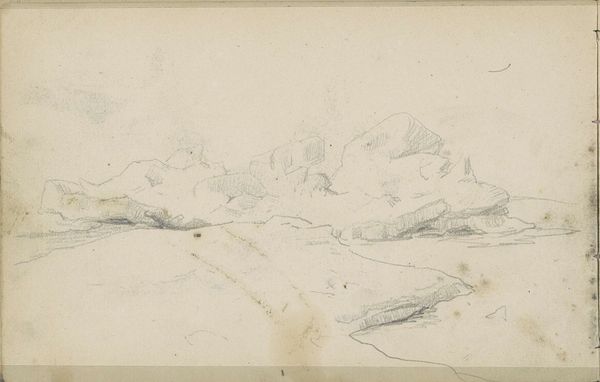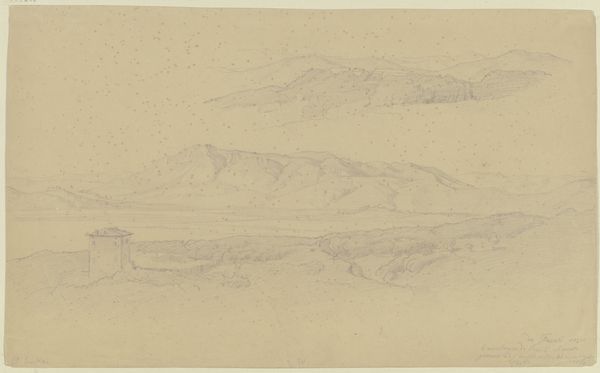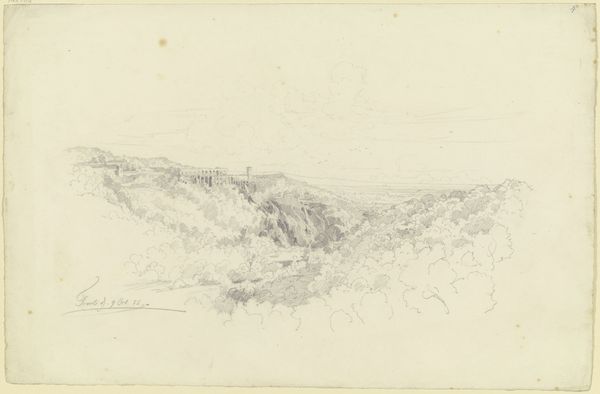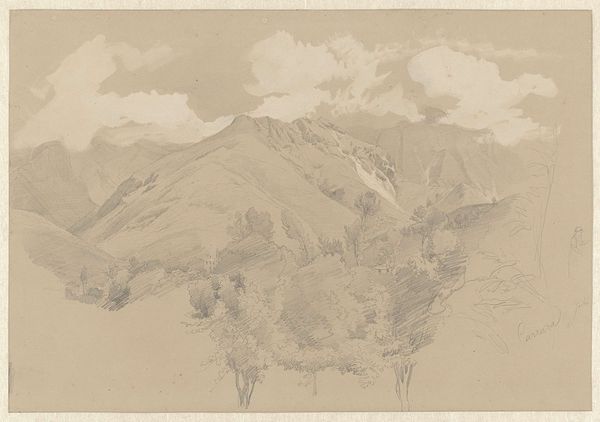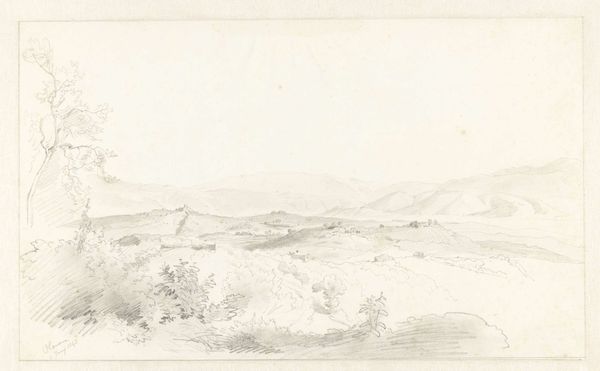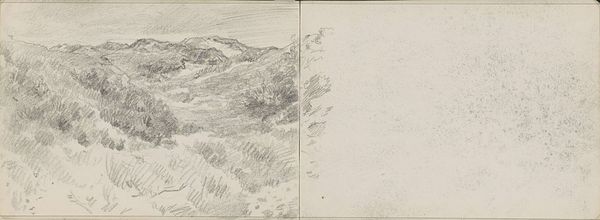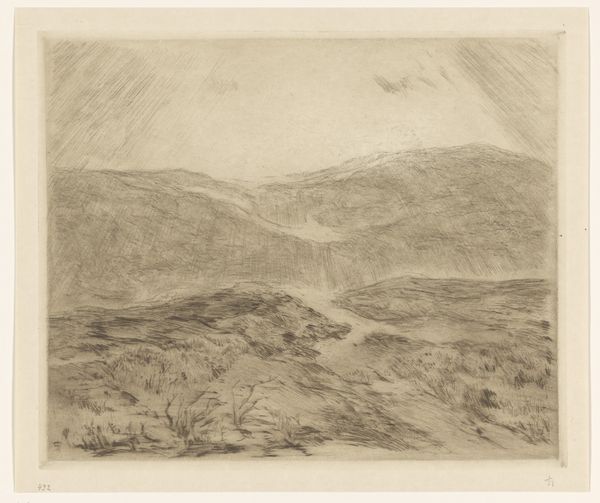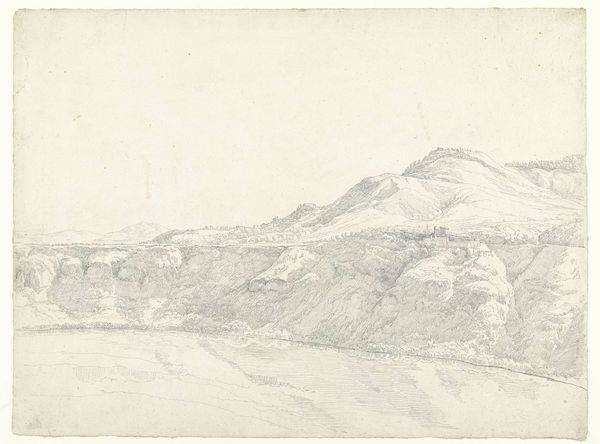
drawing, pencil
#
drawing
#
landscape
#
etching
#
geometric
#
mountain
#
pencil
#
realism
Dimensions: height 434 mm, width 580 mm
Copyright: Rijks Museum: Open Domain
Curator: Standing here, one can almost feel the expanse of Hendrik Voogd’s “Berglandschap in de Romeinse Campagna,” or "Mountain Landscape in the Roman Campagna" rendered in pencil between 1788 and 1839. Editor: My immediate impression is one of serenity, yet also distance. The muted tones create a dreamlike quality, and the composition draws the eye deep into the landscape but never quite connects to a focal point. Curator: I find Voogd’s rendering of the Campagna incredibly compelling within its historical context. The late 18th and early 19th centuries witnessed a growing interest in the 'picturesque,' with artists seeking out untamed landscapes that spoke to broader notions of freedom and the sublime—ideas evolving with revolutions on both sides of the Atlantic. Editor: Undoubtedly. However, observe how the artist uses the delicate lines and shading to create volume and depth. The geometric forms of the architecture against the organic mountains generate visual complexity; the semiotic tension makes for an interesting study. Curator: Precisely. That contrast speaks to the negotiation between civilization and nature inherent in representations of landscape. Consider the role of the Roman Campagna, it’s a space ripe with complex legacies—a site of agricultural production, ancient ruins, and aristocratic leisure. Voogd's positionality as a Dutch artist in Italy cannot be overlooked when assessing his interpretations. Editor: Indeed. By isolating these features, the eye is free to appreciate their construction, regardless of context. It highlights the relationship between geometric man-made construction, as displayed on the precipice and in the more distant valley, compared to the natural peaks of the surrounding hills and distant mountains. Curator: His choices regarding the angle, composition, and technique also position us within this dialogue. His artwork reflects that historical moment but also establishes ongoing ways of envisioning landscapes and negotiating our relationships to those environments. Editor: Reflecting on Voogd's choices in texture and value creates, in the end, more appreciation for the art. Curator: It reminds us of how deeply art reflects history and our ongoing struggles within these spaces.
Comments
No comments
Be the first to comment and join the conversation on the ultimate creative platform.
